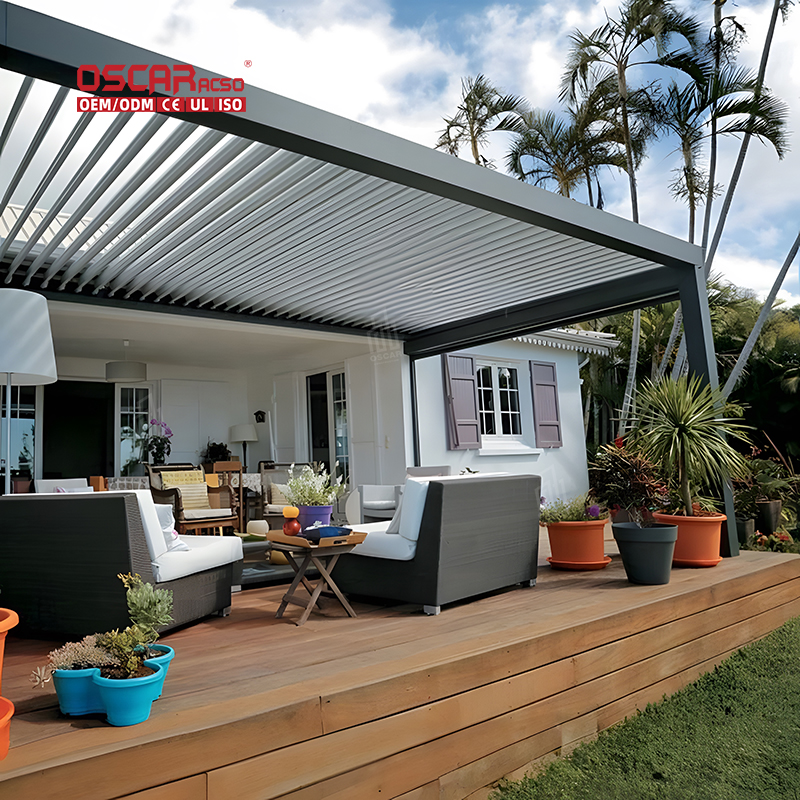Pergola Placement Secrets: How Far From a Fence for Beauty & Compliance
『Pergola Placement Secrets: How Far From a Fence for Beauty & Compliance』Building a pergola in your backyard is an excit...
『Pergola Placement Secrets: How Far From a Fence for Beauty & Compliance』

Building a pergola in your backyard is an exciting project! But one question often pops up: How far should it be from your fence? It’s not just about looks—it’s about following rules, keeping peace with neighbors, and creating a space you love. Let’s explore the ideal distance and why it matters. 🤔
Why Distance Between Pergola and Fence Matters
The gap between your pergola and fence isn’t arbitrary. It affects:

- •
Legal Compliance: Local zoning laws and homeowners’ associations (HOAs) often have strict rules about setbacks from property lines. Ignoring these can lead to fines or being asked to take it down.
- •
Aesthetic Appeal: A well-proportioned space feels more balanced and intentional.
- •
Practical Maintenance: Leaving enough room allows for easy access to clean and maintain both your pergola and the fence.
- •
Neighbor Relations: Being mindful of your neighbor’s space, light, and air helps maintain good relationships.
✨ General Guidelines and Recommended Distances
While rules vary by location, some common recommendations emerge. A frequently suggested minimum distance is at least 5 feet (approximately 1.5 meters) from the property line or fence . This provides a comfortable buffer for most needs.
.jpg)
For a more generous and flexible space that allows for future changes, a distance of at least 5 meters from any buildings or fences is recommended .
My personal advice? Always err on the side of giving yourself more space. It makes the area feel larger and avoids potential disputes.
.jpg)
📏 Understanding Setbacks and Property Lines
The legal term you need to know is “setback.” This is the minimum distance your structure must be from your property’s boundary. These rules are defined by local zoning ordinances and can vary significantly by city, county, and even your specific neighborhood covenants.
- •
Typical Setback Ranges: Generally, side setbacks can range from 3 to 10 feet, while front and rear setbacks are often larger, between 10 to 20 feet .
- •
Always Check Locally: The most crucial step is to contact your local building authority or planning department. They can give you the exact requirements for your property. Don’t rely solely on generic online information!
⚠️ Key Factors Influencing Your Pergola’s Placement
Several things will influence how close you can build to your fence:
- •
Local Zoning Laws and HOA Rules: This is the most important factor. Your HOA might have even stricter rules than your city.
- •
Pergola Height: If your pergola is within 2 meters of the boundary, many areas impose a maximum height limit (e.g., 2.5 meters) to avoid overshadowing neighbors .
- •
Type of Pergola: Is it attached to your house or freestanding? Attached structures might have different rules. Freestanding pergolas require their own foundations and are often subject to standard accessory structure setbacks .
- •
Fire Safety Regulations: Building very close to a property line (e.g., within 5 feet) may trigger specific fire safety codes .
🔍 Permits and Permissions: What You Need to Know
Do you need a permit? It depends.
- •
Often Not Required: Small, low-level pergolas are often considered “permitted development” or temporary structures and may not need a formal planning permission, especially if they are under a certain size (e.g., 20m² or 2.5m tall) .
- •
When You Likely Need One: You will probably need a permit if your pergola is :
- •
Large (covers over a certain area, like 40 m² in some places).
- •
Tall (exceeds local height limits).
- •
Located in a front garden, conservation area, or very close to a boundary.
- •
Includes electrical wiring (e.g., for lights or fans) or plumbing.
- •
When in doubt, always apply for a permit. It’s better to be safe than to have to alter or remove a costly structure later.
💡 Pro Tips for a Successful Project
- •
Talk to Your Neighbors Early: This is a golden rule. Even if you follow all the laws, a friendly conversation about your plans can prevent misunderstandings and build goodwill.
- •
Consider a Freestanding Design: If building near a fence, a freestanding pergola can be an excellent option as it is independent and doesn’t rely on the fence or house for support .
- •
Think About Function: How will you use the space? Leaving more room allows for planting, adding seating, or walking around comfortably.
- •
Get Professional Help: If you’re unsure about the rules, structural integrity, or installation, consulting a professional builder or landscaper is a wise investment .

Getting the distance right from the fence is a key ingredient for a successful pergola project. It ensures your new outdoor haven is not only beautiful and functional but also a peaceful and compliant part of your home. Enjoy building! 🌿

